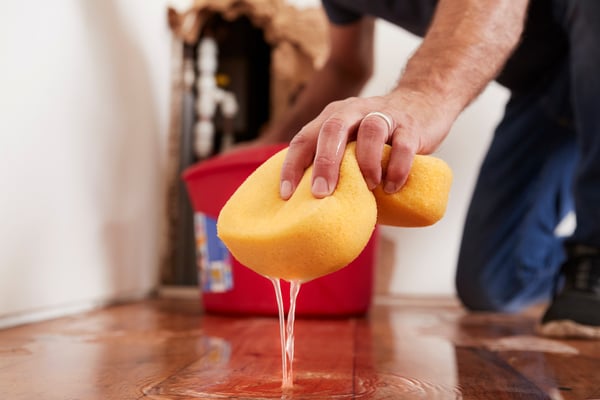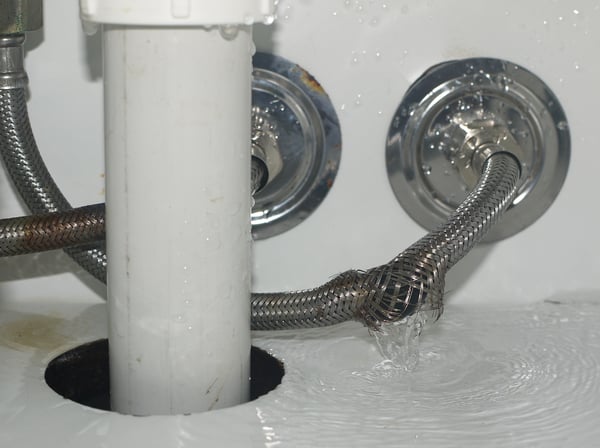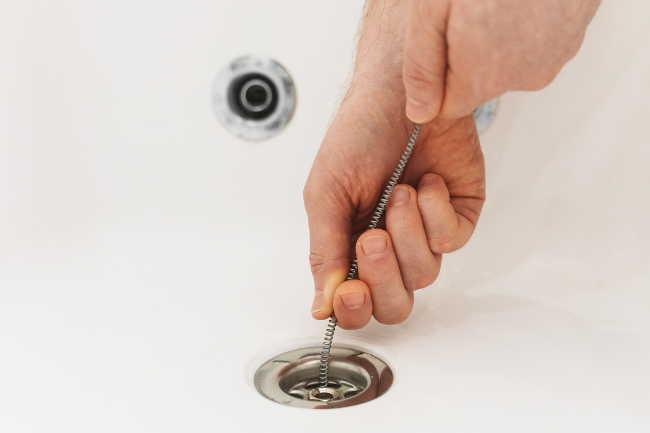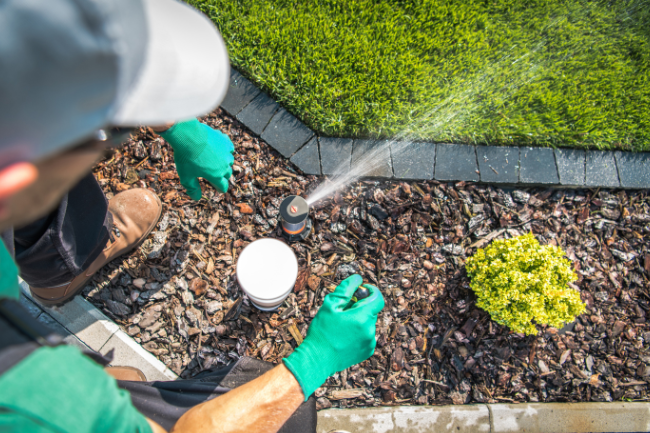DIY: How to Handle Emergency Plumbing Situations at Home
Posted by William Heinselman on

Odds are that if you’ve lived in your home for long enough to come across one or more plumbing emergencies. Residential plumbing emergencies are serious issues that need to be tackled quickly and effectively before you're faced with an even bigger problem on your hands.
Residential Plumbing Emergencies to Know
Even though plumbing emergencies don't necessarily bubble up on a daily basis, it's important that every homeowner is prepared for possible emergencies in order to make sure that the situation doesn't grow out of control. For example, some typical household plumbing problems tend to involve:
- clogged toilets
- leaky pipes
- backed-up drains
- discolored or odd-smelling water, and
- low water pressure
Some of these emergency plumbing situations are easier to fix than others. Most people know how to plunge a toilet, but finding and replacing a damaged section of pipe can be much more challenging.
For many plumbing emergencies, time is of the essence. The longer a problem goes unaddressed, the worse the damage can become. This is why many homeowners choose to hire professionals to quickly find and fix major plumbing emergencies. A professional usually has the tools and experience to quickly identify a problem and make lasting repairs.
But, you can’t always wait for a professional service. Or, you might want to try to reduce costs by fixing the problem yourself. For some less severe emergencies, DIY repairs are a perfectly valid option.
Tips for Resolving Emergency Plumbing Problems at Home
Before you embark on your mission of fixing the disposal or removing a clog, however, here are a few tips for how you can handle a plumbing emergency in your home:
Tip #1: Learn Where Your Plumbing Cutoffs Are Located
One of the most important things you can do to fix a plumbing problem is to be as familiar with your plumbing system as possible. A basic piece of information you should know before starting to fix most plumbing problems is where the cutoffs/isolation valves for your water pipes are located in your home. In many homes, these shutoff valves can be found in basements, crawlspaces, or mechanical rooms.
For some plumbing repairs, you may need to access or even remove pipes, and you can’t do that safely with water running through them. Knowing where you can shut off the flow of water is important for making repairs.
Additionally, learn how to shut off the water heater, and turn it off before removing any pipes, even if you “know” you won’t be messing with the hot water line. Accidentally opening the hot water line with the heater engaged could result in severe burns.
Tip #2: Make Sure You Have a Few Plumbing Tools
Having the right tools can make a huge difference in how easy a plumbing repair task is.
Some tools every homeowner should have include (but aren’t limited to):
- A bucket: Perhaps a simple but mighty tool, buckets are useful for catching spilled water under a leaky pipe or pipe that you’re working on as well as a tool caddy.
- Plungers (cup and forced cup): Forced cup plungers excel at unclogging toilets, while cup plungers are handy for forcing sink blockages through the line.
- Old or specially-marked toothbrush: Toothbrushes are ideal for cleaning around the inside of a drain or pipe and removing buildup.
- Adjustable wrench: An adjustable wrench is handy for screwing or unscrewing pipes of all sizes.
- Slip-joint pliers: These tools are useful for handling smaller pipes.
- Multi-bit screwdriver or screwdriver set: If you don't already have a set of screwdrivers, then you should probably consider purchasing a kit. These are helpful for assembling and disassembling certain pipe assemblies and surrounding cabinetry.
- Allen wrenches: An Allen wrench, sometimes also called a hex-key, can sometimes be useful for fixing faucets and garbage disposals.
- Duct and sealing tape: Duct tape can be used as a temporary fix to hold pipes together. Sealing tape is useful for going around pipe threading to form a better seal and prevent leaks in new pipe installations.
- Paper towels and rags: You probably already have old rags on hand, but they can be used to clean up spills.
- Drain snake: A drain snake can be used to break up clogs deep in a pipe that you cannot normally reach.
- Gloves: A pair of gloves can help keep hands safe and clean when working on plumbing.
- Protective eyewear: Prevent eye infections and injuries by wearing protective goggles.
With these tools, you should be able to complete many different types of plumbing repairs around the home.

Tip #3: Assess the Nature and Severity of the Plumbing “Emergency” Before Attempting a DIY Fix
Some plumbing problems are easy to fix. Others, not so much.
A clogged toilet or drain is a common enough problem, and there are many ways to fix such a problem. Leaky pipes may require just a quick inspection & tightening, the use of sealing tape, or even a complete replacement of a section of pipe, depending on the nature of the leak.
If a problem is particularly severe and you’re not sure how to repair it, consider using a professional plumbing service right away.
Tip #4: Act Quickly to Minimize Further Damage
Once you’ve discovered a plumbing problem, it’s important to be timely in your response to the issue. Your response should be based on your assessment of the problem.
For example, if you find a slow leak in a water supply line, place a bucket under the leak site to catch any water. This can help prevent water damage to the building.
However, a larger leak might be too much to handle with a bucket. In this case, you’ll want to shut off the water supply to the leaky pipe as soon as possible. Find the isolation valve controlling water to that pipe and turn it off.
Once you’ve mitigated the immediate problem, take some time to study the issue and get specific advice.
Tip #5: Create an Evacuation Plan
In rare instances, you will need to leave your house due to the implications of the problem at hand, whether that be a gas leak or a sewer backup. Each of these scenarios can lead to harmful health-related issues.
So, while it might sound extreme, it may be wise to have a plan in place that gets everyone out of the house as quickly as possible. When doing so, make sure that everyone is at a safe distance from the home before taking action to resolve the problem.
Tip #6: Get a Set of Helping Hands
The truth is, that some plumbing fixes work best when you have a second person helping you.
For example, many kitchen sinks have two drains or a drain and an overflow. These connected drains reduce the efficiency of a plunger—you plunge the drain, and the air simply comes out of the other drain or overflows rather than breaking up the clog.
Having a second person cap the other drain while you plunge the first helps keep the air trapped in the line so the pressure buildup can clear the clog. Also, a second pair of hands and eyes can be useful for improving safety in general.
Call a Professional for Serious Plumbing Emergencies
Hopefully, the tips we've provided will help you be better prepared to handle a plumbing emergency in your home. Fortunately, the expert plumbers at Express Sewer & Drain are ready in case of any emergency situations that you find yourself in.
Remember, if a plumbing emergency is especially difficult or dangerous to fix, seek professional help. Professionals have the training and experience to handle most plumbing emergencies while minimizing risks. To get started with tackling residential plumbing problems, reach out to the team at Express Sewer today!
Topics: Home Plumbing, Plumbing Emergencies, DIY







